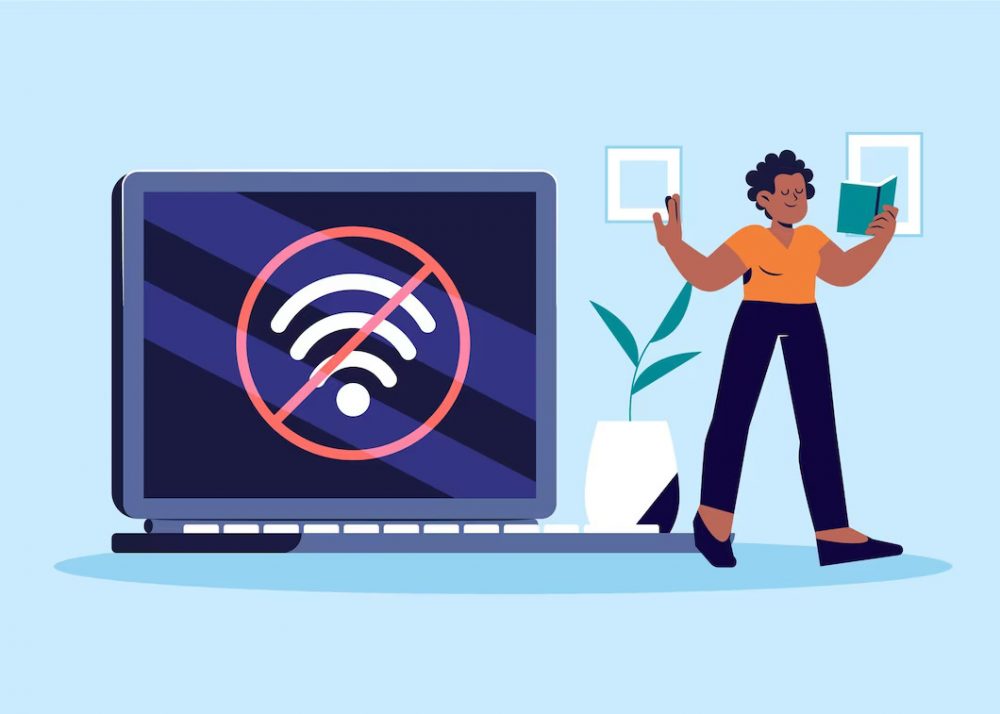In today’s world, we rely heavily on the Internet for almost everything we do. But there are some places where getting a good internet connection is tough. These places are called Internet Dead Zones.
In simple terms, an Internet Dead Zone is an area where the Internet is either very slow or doesn’t work at all. It can happen in cities or rural areas.
In this article, we will explore the causes and consequences of Internet Dead Zones and delve into potential solutions to bridge the connectivity gap.

Understanding Internet Dead Zones
Definition of Internet Dead Zone
An Internet Dead Zone refers to a location with inadequate access to the Internet, hindering the ability to establish a stable online connection. These zones can be found in both urban and rural areas and are primarily a result of limited infrastructure or geographical obstacles.
Factors Contributing to Dead Zones
Several factors contribute to the existence of Internet Dead Zones. One of the main reasons is the lack of proper telecommunication infrastructure in remote areas. Additionally, natural barriers like mountains and dense forests can obstruct signals, making it difficult to establish reliable connections.
Impact of Internet Dead Zones
Communication and Connectivity Challenges
Internet Dead Zones lead to significant communication challenges for both individuals and businesses. People residing in such areas face difficulties in staying connected with friends and family, accessing online resources, or engaging in video conferences for work or educational purposes.
Economic Implications
The presence of Internet Dead Zones can hamper economic growth and development in affected regions. Businesses in these areas may struggle to compete on a global scale due to limited access to digital markets and e-commerce platforms.
Social and Educational Constraints
Internet connectivity is crucial for accessing educational resources and staying updated with the latest information. Students in Internet Dead Zones often encounter obstacles in remote learning, putting them at a disadvantage compared to their well-connected peers.
Identifying Internet Dead Zones
Rural Areas
Rural regions are among the most common places to find Internet Dead Zones. The lack of infrastructure investment in sparsely populated areas makes it challenging for service providers to offer reliable and high-speed internet connections.
Urban Dead Zones
Surprisingly, even densely populated urban areas can have pockets of Internet Dead Zones. These dead zones may occur due to signal interference from tall buildings, metal structures, or electromagnetic disruptions.
Initiatives to Address Internet Dead Zones
Government Initiatives
Governments around the world have recognized the importance of bridging the digital divide and are implementing various initiatives to address Internet Dead Zones. These initiatives often involve subsidies or grants to encourage internet service providers to expand their coverage to underserved areas.
Private Sector Efforts
Telecommunication companies are continuously striving to improve connectivity. Some are investing in new technologies, such as satellite internet and mesh networks, to extend coverage to previously unreachable regions.
Community-Based Solutions
In some cases, local communities take matters into their own hands and create community networks to overcome Internet Dead Zones. These networks often rely on volunteer efforts and shared resources to establish internet connectivity within their areas.
Advancements in Connectivity Technologies
Satellite Internet
Satellite internet has emerged as a game-changer for bridging connectivity gaps in remote and rural areas. It utilizes satellites orbiting the Earth to provide internet access to users regardless of their geographical location.
5G and Beyond
The fifth-generation wireless technology, 5G, promises faster and more reliable internet connections. While its implementation is primarily focused on urban centers, it holds the potential to extend connectivity and reduce dead zones as its infrastructure expands.
Mesh Networks
Mesh networks offer a decentralized approach to connectivity, where each device in the network acts as a node, relaying data to other devices. This technology can effectively cover large areas and is resilient to disruptions.
Overcoming Dead Zones: Tips for Users
Enhancing Wi-Fi Signals
Users in areas with weak Wi-Fi signals can use signal boosters or Wi-Fi extenders to enhance their connectivity and expand their coverage area.
Switching to Mobile Data
In areas with limited fixed-line internet access, using mobile data from reliable cellular networks can serve as an alternative to staying connected.
Using Signal Boosters
Signal boosters can amplify weak cellular signals, making them useful for improving mobile internet reception in dead zones.
Conclusion
Internet Dead Zones remain a challenge in our digitally connected world, affecting communication, education, and economic opportunities.
However, with combined efforts from governments, companies, and communities, we can overcome this issue and ensure that everyone, regardless of their location, can access the boundless benefits of the internet.
FAQs
What causes Internet Dead Zones?
Internet Dead Zones are primarily caused by the lack of proper telecommunication infrastructure, geographical barriers, and signal interference.
Are there Internet Dead Zones in urban areas?
Yes, some urban areas may have Internet Dead Zones due to signal interference from tall buildings or other obstructions.
How do satellite internet and mesh networks work?
Satellite internet uses satellites orbiting the Earth to provide internet access, while mesh networks use interconnected devices to relay data.
Can community networks effectively address Internet Dead Zones?
Yes, community networks can be successful in providing internet connectivity in areas where traditional service providers are unavailable.
What technologies hold the promise of better connectivity in the future?
Technologies like satellite constellations, high-altitude balloons, and advanced wireless networks offer hope for better connectivity in the future.




